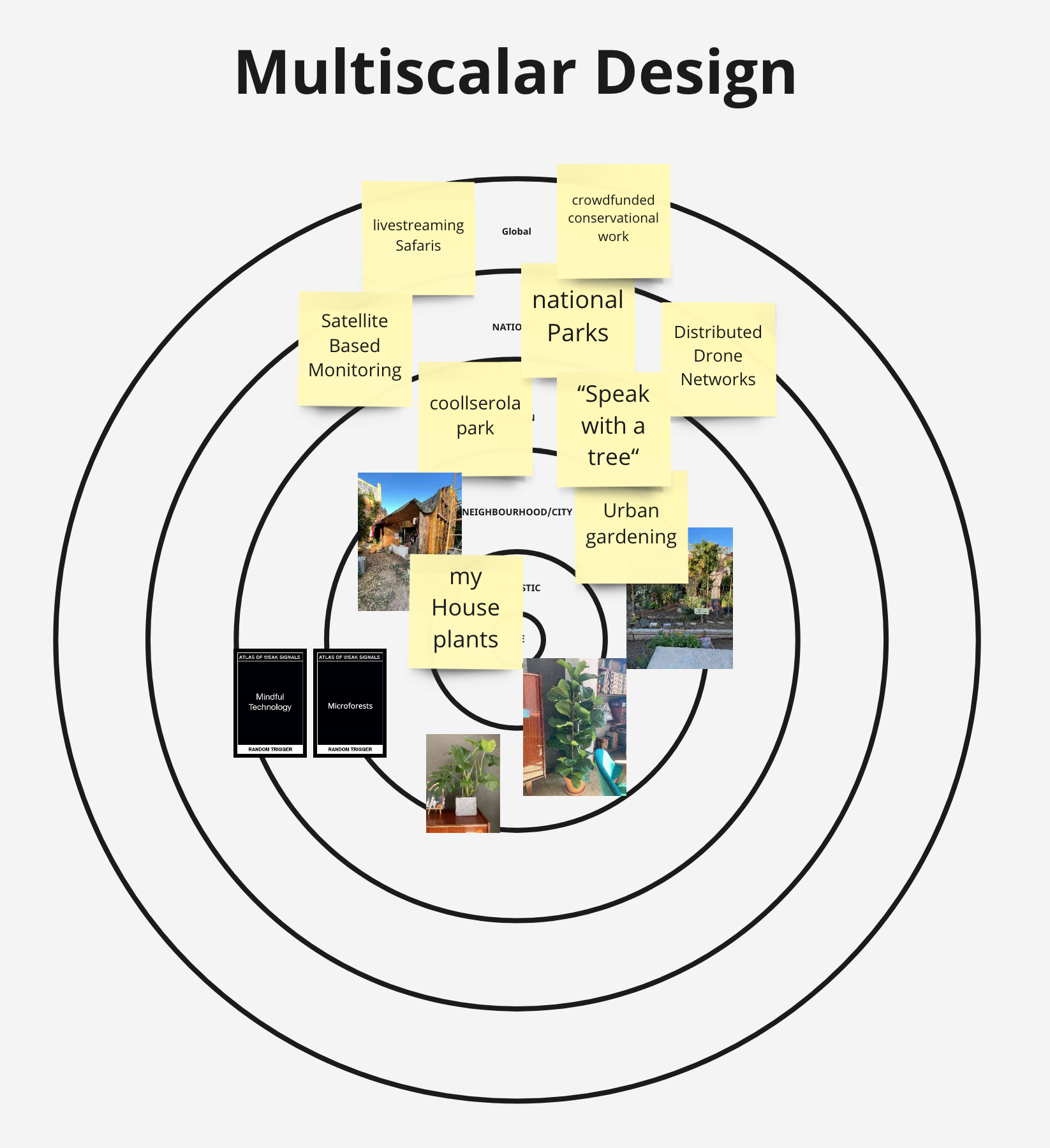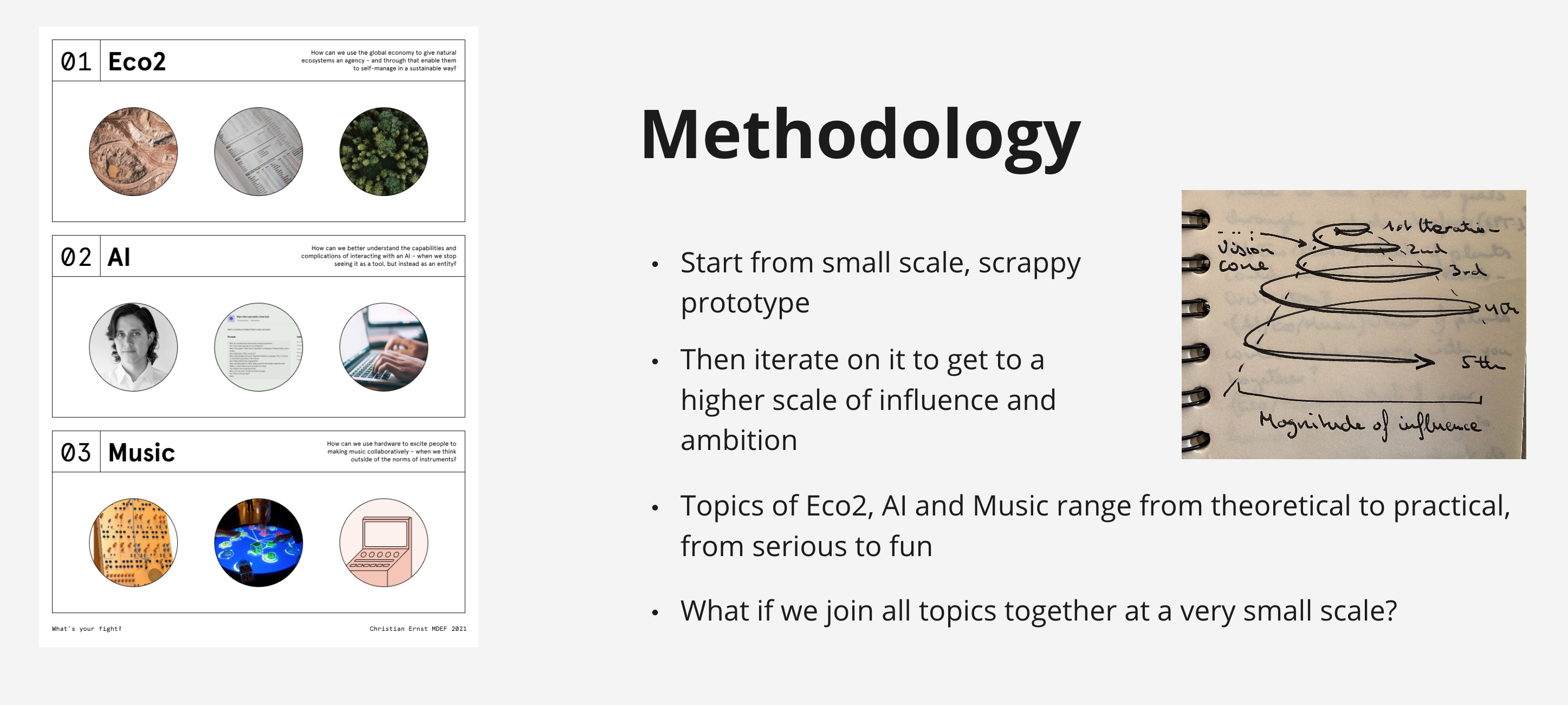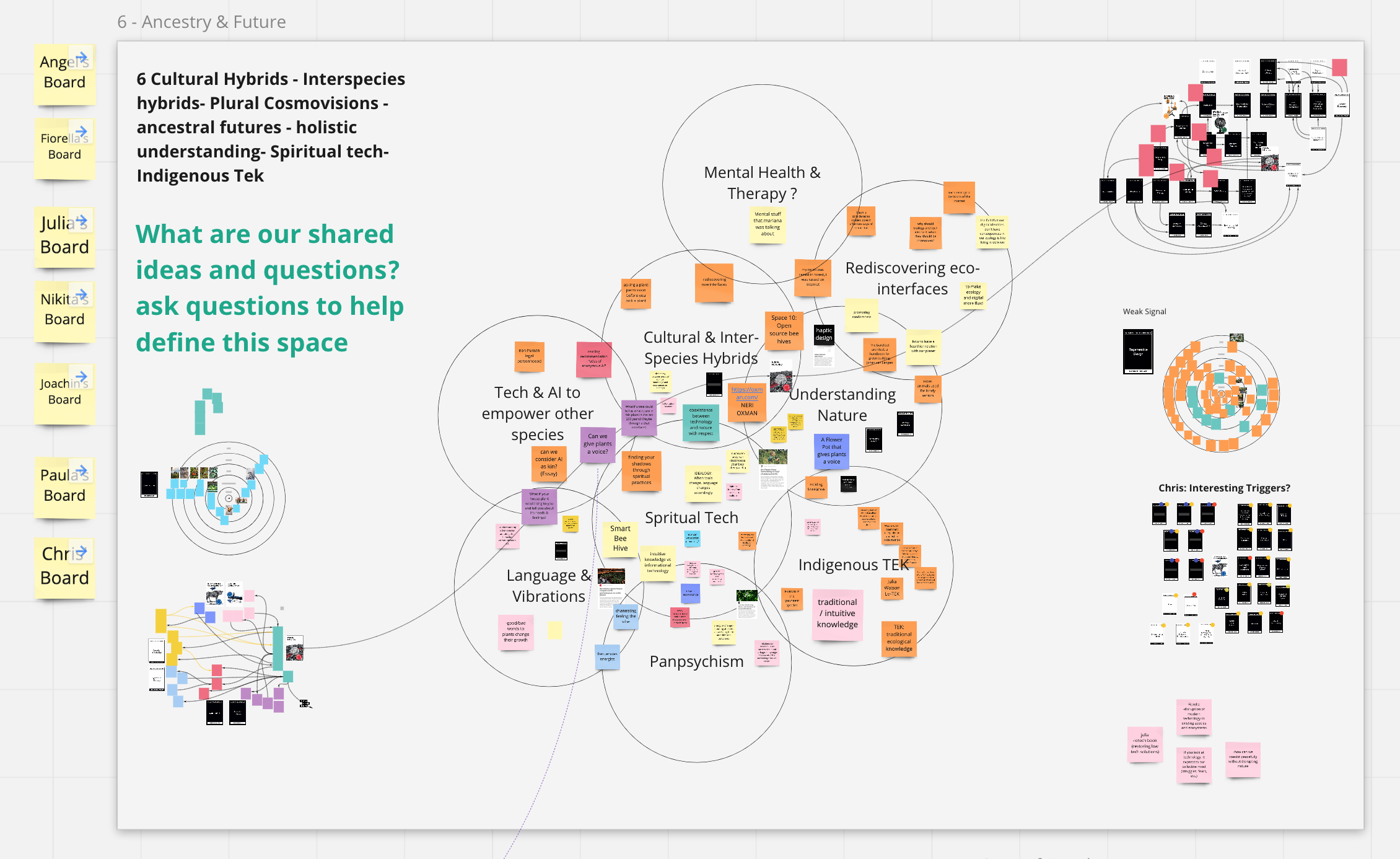Creating a Personal Design Space
After the initial ideation warmup exercise, I chose 'Mindful Technology' and 'Microforests' as my weak signals. These two particular topics were broad and flexible enough to be combined with all three of my topics mentioned on the 'What's my fight poster' a week prior (Ecology, AI and Music). At the same time these two cards were not referencing a certain technology or technological approach, in order to not restrain me conceptually. Below, some impressions of the personal design space on Miro can be found.


Left: A selection of the most interesting triggers and trends. Cards marked with a blue dot are custom cards not included in the original set. Right: The multi-scalar design space relating my weak signal to different scales of surroundings.
Narrowing in an idea
After the classes on Monday afternoon, we had the chance to take part in a 1-on-1 consultation with select mentors, which was Jonathan Minchin in my case. In the following talk, I asked him about the conceptual struggles I had with choosing one of my three main topics specified in the poster (seen below) and the compromises that would entail. All three of these topics operated on different scales in terms of overall scope, idealistic ambition, hands-on work, conceptuality and possiblity to take full advantage of the curriculum this program offers. This meant for me that it proved to be hard to settle on one idea in particular: If I went for the most abstract one (Eco2), I would lack the possibility to dive into fabrication, while if I chose to build a collaborative jam station I miss the idealistic ambition and scope of other ideas.
In a long talk, Jonathan reminded me that I was right to think about this in such a strategic way, however I should avoid to think in fixed outcomes, but in rather in iterations of the same concept. This meant aiming at a 'MVP' or prototype level for the end of term one and then iterating on it afterwards to have the project ideas become much more tangible and feasible in scope. Therefore I would not have to necessarily choose between the three topics, but I could try to merge them all in one project. More on this conceptual journey can be read and seen below.

Documenting my methodological approach to the conceptual phase after the talk with Jonathan Minchin.

Intersecting areas of interest and different project possibilities that emerge from the combination of them.

A project idea distilled from the intersecting areas of interest and identified as the easiest entry point into the matter.

First research overview decided by different levels and entry points.

Exploring what kind of sensor data can be gathered – Left: One of my house plants; Right: Data from a LiDAR scan visualized as a volumetric point cloud.
A Collaborative Design Space
The experience of finding points of resonance with others felt seamless and natural. After an initial free discussion where everybody shared their view on the topic at hand, we moved on to defining – the admittedly very broad topic – in more detail. To do that in a fluid and collaborative way, we drew overlapping circles of sub-topics which could be filled with sticky notes, links and ideas. This way we managed to create an overview over our entry points to the topic within roughly 30 minutes. While doing so, already a myriad of interesting cross-references, synergies and collaboration opportunities appeared.

The collaborative design space of the group "Ancestry & Futures" (screenshot taken on Friday 12.21 pm).
Next Steps
As for my next steps, I would like do dive deeper into the topic both from a conceptual and technological angle. For the research part, I would like to contact former IAAC students who gathered experience working with plants in a similar way. Further, I remember a few academic projects in Berlin that did something comparable – they are leads worth pursuing. Parallel to that, building a simple sound machine (based of the ESP-32 microcontroller) that can receive MIDI signals and play notes would be the logical first step. After that, attaching diodes to the plant to receive electric signals would become feasible. Through that, diving more into hardware making is a skill I'd like to add to my professional portfolio.
